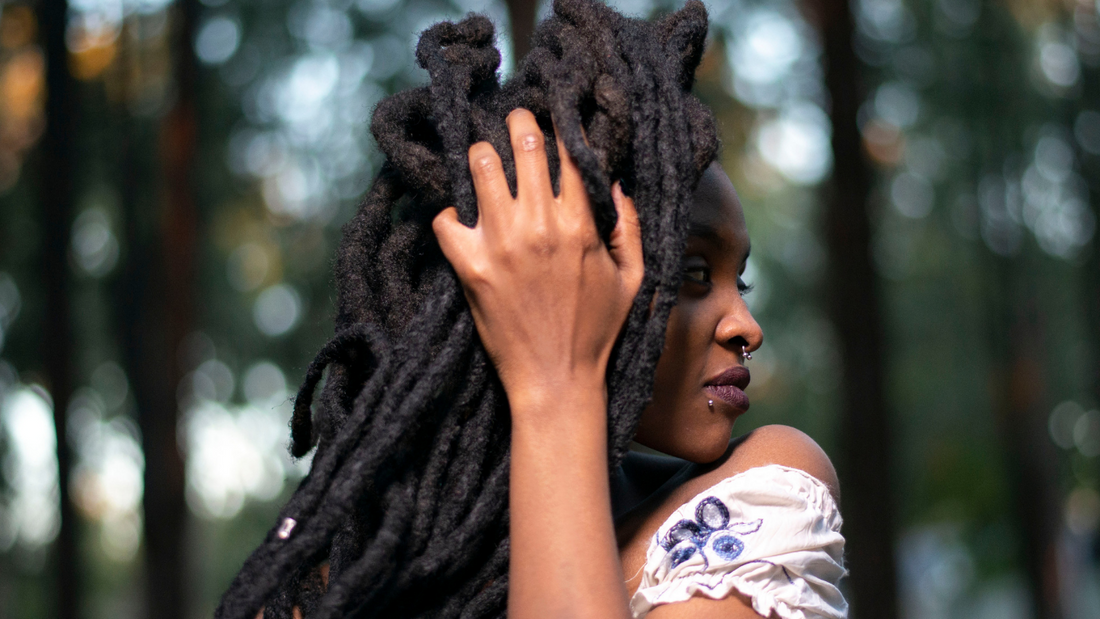We are witnessing a wave of natural awareness sweep the country. Dreadlocks have become an acceptable hair style amongst society. What was once a rebellious act towards the norm, has now become fashionable. Millions of inquiries sweep the information landscape, wondering how to style dreadlocks, or where to buy or grow dreadlocks.
Dreadlocks (sometimes referred to as Dreads, Locs, or Jata) are often associated with the Rastafarian movement.
Historically, many groups have worn Locs before they became popular in Jamaica. There are drawings of a Dreadlock Samson fighting a lion. Sadhu and the Sufi Rafaees of India, the Maori people of New Zealand, the Maasai of East Africa, and the Sufi Malang and fakirs of Pakistan are a few cultures who wore locs for one purpose or another, centuries before the 1900s.
Reasoning, as to why people wear locs, may vary. For some, their dreadlocks are worn for religious conviction, some wear them as a symbol of their ethnic pride, and many have not gained insight on their hair being a lifestyle. For these people, Locs are just a hairstyle.
Just like the many textures of hair, there are various methods to style dreadlocks. Hair texture plays a significant role in how to dreadlock hair. Back combing, twisting, two strand twist, palm rolling, loc extensions and "dread perming" for straight hair, are a few methods used to dreadlock hair. Many never touch their hair, and locs form naturally. Real neat and carefully maintained locks are referred to as manicured dreads.
A new endearing term "Sisterlocs" or "Brotherlocs" has introduced a very versatile beautiful appearance to dreadlocs. Sisterlocs, are very neat and tiny dread locs strategically arranged throughout the hair. Many women not only boast on their beauty, but also love the diverse hairstyles that they are able to wear with their Sisterlocs. Some even say they are able to achieve a lot of the same styles they wore before their Sisterloc journey.
Like with many new found fascinations, the dreadlock brings about many false rumors and misconceptions.
Rumors of African Americans being the only ones who can have nice locks are common. Locs, when maintained and properly groomed, can have a healthy beautiful appearance on any texture of hair. I have heard people say the locs grow and form better when the hair isn't washed. The only result that I can say happens to the hair from not washing is making it smell horrible.
Not washing also puts your scalp at risk for ringworms and other damaging fungi and conditions to the scalp and hair. In truth, most shampoos contain residues (conditioners, moisturizers, and fragrances) that prevent the hair from locking.
Regular washes with no residue shampoos are encouraged in the beginning stages of locking. The thing to be conscious of when shampooing newly formed locks is the technique. Instead of the ruff scratch, shake, push pull we use to do when shampooing hair, treat the locks as if you were washing a delicate sponge with repeated rinsing and washing, squeezing the hair to wring out water and residue.
When question, "How do I style dread locks" or "How do I get dreadlocks" arise, be sure to research and become informed of not only the methods and styles, but the history as well.
This will take the decision to Loc it, from being a Hairstyle...to a Lifestyle.
